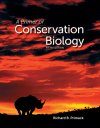About this book
A Primer of Conservation Biology, Fifth Edition incorporates background, theory, and examples in a lively and readable text that will appeal to a wide audience and stimulate interest in conservation biology. A Primer of Conservation Biology provides the most up-to-date perspective on many high-profile issues in the field, such as sustainable development, global warming, payments for ecosystem services, and strategies to save species on the verge of extinction.
The Primer is divided into nine chapters, focusing successively on biological diversity and its value, the threats to biological diversity, conservation at the population and species levels, protecting, managing and restoring ecosystems, and sustainable development. A Primer of Conservation Biology provides many examples of successful conservation approaches, such as one involving sea turtles in Brazil, and ends with suggestions for a future agenda. Throughout, the choice of examples is well balanced to show the full range of species, ecosystems, and geographic areas of the world. These examples are also selected to demonstrate the controversies in the field, and stimulate thought and discussion. The links between conservation biology and environmental law, environmental economics, philosophy, social sciences and anthropology, park management, and government policy are clearly presented.
A Primer of Conservation Biology is very well illustrated in color. The reader-friendly text is backed by an extensive bibliography (covering literature through 2012) and a glossary. There is an annotated list of suggested readings, a summary, and discussion questions at the end of each chapter. Key conservation organizations and their websites are presented in an Appendix.
A Primer of Conservation Biology is ideally suited for use in short undergraduate courses, either as a stand-alone text or supplemented by outside readings. It can also be used effectively as a supplemental resource in courses in introductory biology, general ecology, population biology, environmental science, and wildlife management. Its broad perspective, concise format, and appealing writing style make the Primer the perfect choice for students, professionals, government policymakers, and others who are eager to learn more about conservation biology. These same qualities give A Primer of Conservation Biology a strong appeal to students whose first language is not English.
Contents
1. Defining Conservation Biology
2. What Is Biodiversity?
3. The Value of Biodiversity
4. Threats to Biodiversity
5. Extinction is Forever
6. Conserving Populations and Species
7. Protected Areas
8. Conservation outside Protected Areas
9. The Challenges of Sustainable Development
Customer Reviews
Biography
Richard B. Primack is a Professor in the Biology Department at Boston University. He received his B.A. at Harvard University in 1972 and his Ph.D. at Duke University in 1976, and then was a postdoctoral fellow at the University of Canterbury. He has served as a visiting professor at the University of Hong Kong and Tokyo University, and has been awarded Bullard and Putnam Fellowships from Harvard University and a Guggenheim Fellowship. Dr. Primack was President of the Association for Tropical Biology and Conservation, and is currently Editor-in-Chief of the journal Biological Conservation. Twenty-seven foreign-language editions of his textbooks have been produced, with local coauthors adding in local examples. He is an author of rain forest books, most recently Tropical Rain Forests: An Ecological and Biogeographical Comparison, Second Edition (with Richard Corlett). Dr. Primack's research interests include: the biological impacts of climate change; the loss of species in protected areas; tropical forest ecology and conservation; and conservation education. He is currently writing a popular book about changes in Concord since the time of Henry David Thoreau and Walden.



































